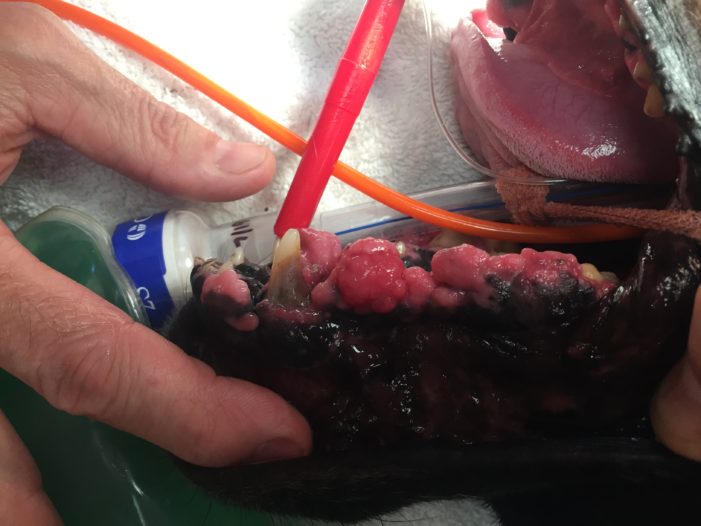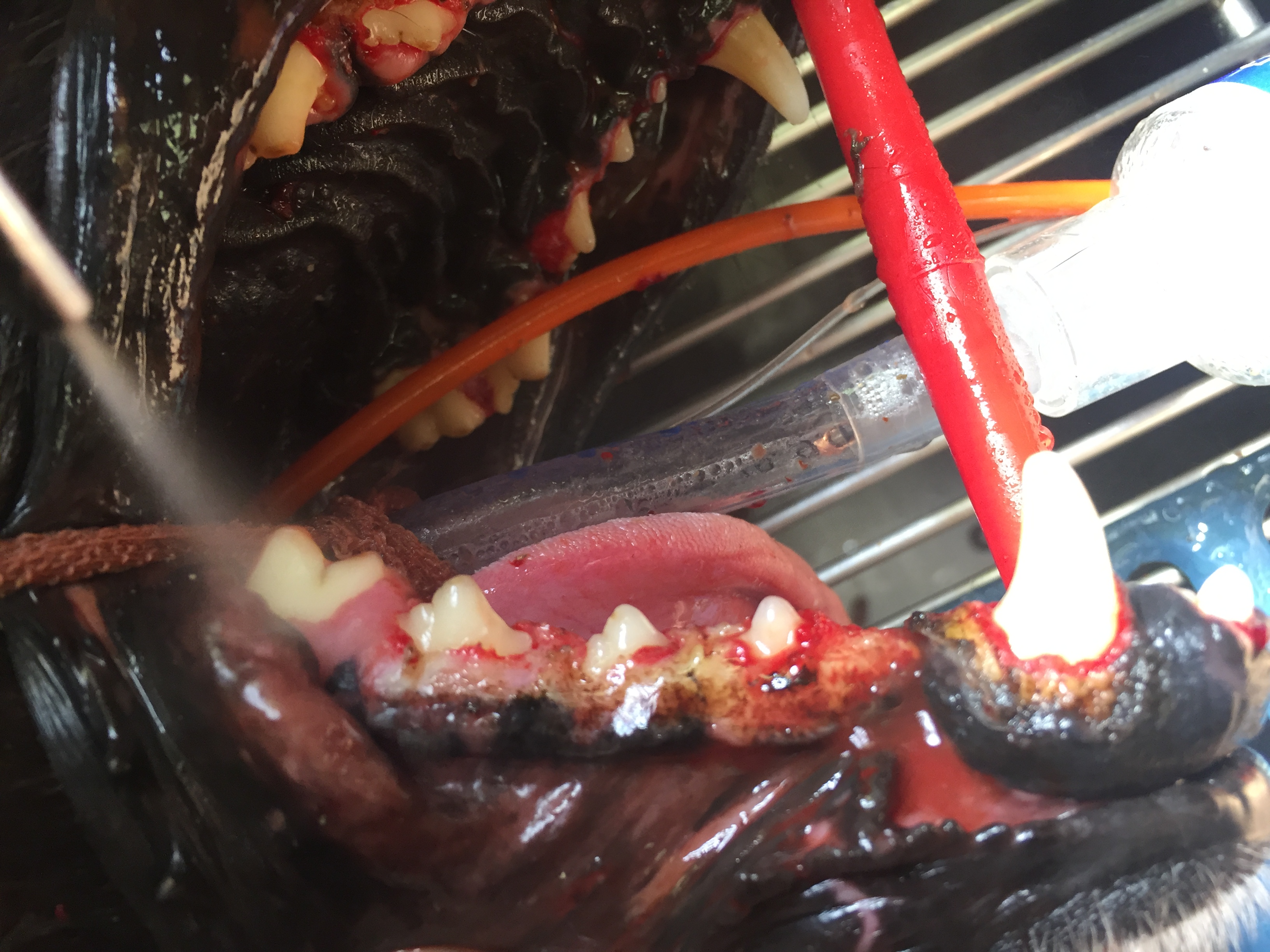
Gingival hyperplasia refers to a medical condition that can occur in dogs and cats characterized by firm, nonpainful swellings associated with the gingiva. Basically gum (gingival) tissue becomes inflamed and enlarged. Gingival hyperplasia is sometimes referred to as fibromatous periodontal hyperplasia.
Gingival hyperplasia is more common in large and giant breed dogs and there is a familial inheritance reported in the boxer, Great Dane, collie, Doberman pinscher, and Dalmatian.
It can be severe in some dogs causing periodontal disease, pain, bleeding, and difficulty eating. Surgery may be recommended. Surgery, called gingivoplasty, involves cutting back the gums and is meant to re-establish the normal height and contour of the gingiva.
Recently a dog came to us with just those signs. We used our laser surgery unit to remove the excess gum tissue. The laser is essential to control bleeding. After resection the teeth were cleaned and polished he was ready to show off his new smile. He did great after surgery and feels much better now.
Below, please see the before and after photos.

Gingival hyperplasia in a dog. Before Surgery.

Gingival hyperplasia in a dog. Before Surgery.

Gingival hyperplasia in a dog. After surgery and tooth cleaning.

Gingival hyperplasia in a dog. After surgery and tooth cleaning.
For more information – go to this article on Gingival Hyperplasia. https://www.petplace.com/article/dogs/pet-health/gingival-hyperplasia-gum-overgrowth-in-dogs/
If you have any concerns with your dog or cat’s dental health, please call us.
